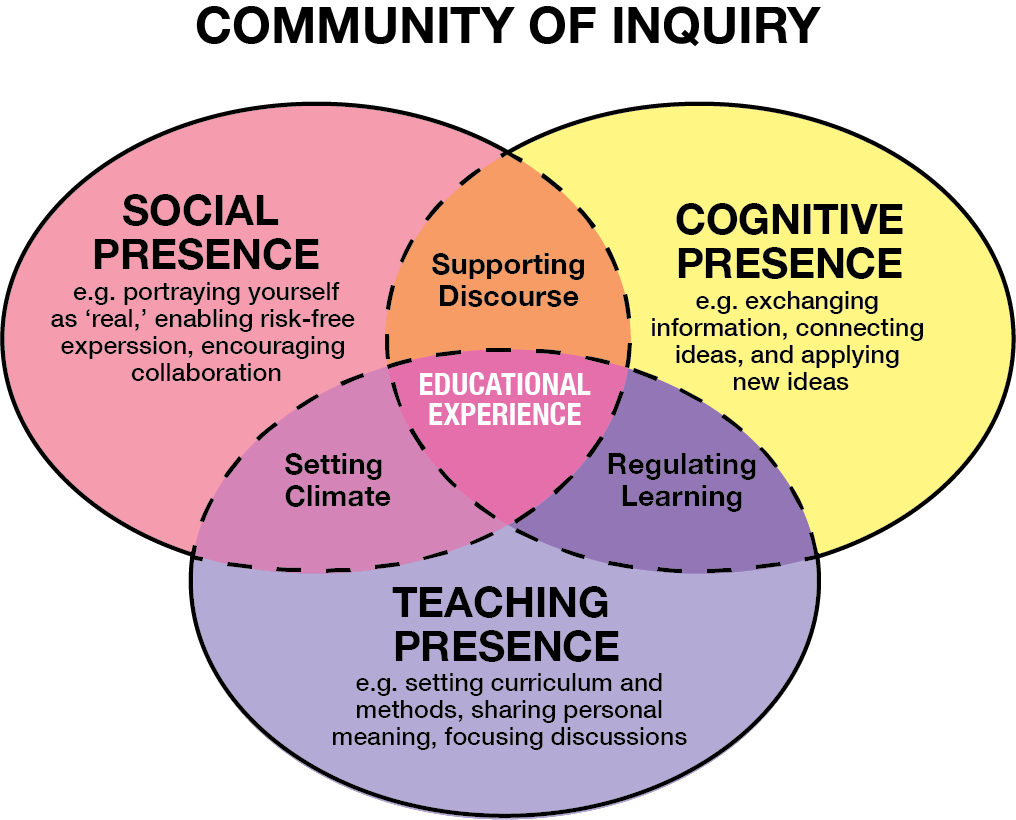Unit 1 Building and Sustaining Community Online
Presences and the Community of Inquiry Model
Thinking about “presence” emerged in the 1990s as a measure of how the newly developed virtual environments differed, or not, from regular, in-person environments.
As we saw in the previously, discussion emerged in the literature on distance education around transactional distance, and the goal of a well-designed and well-executed correspondence course was to reduce the transactional distance between the learner and the learning. Transferring this same goal to the online distance education environment, the Community of Inquiry Framework attempts to further analyze the different elements that go into reducing the transactional distance between the learner, the learning and the mediating learning environment.
Think of presence as the sense of connectedness to others, and how that sense might be affected in an online environment. Instead of a feeling of “being there” in a virtual world, virtual presence is the sense of “being with” someone. Virtual presence is quite different from face-to-face presence. It’s more work as few or no nonverbal cues are available, and virtual communication can by asynchronous while face-to-face cannot.
Translating the idea of presence to the online learning environment has provided us a way to consider the multiple dimensions of being an online participant. Specific to our role as teachers and instructors, the Community of Inquiry speaks to the dimensions that relate to successful online learning environments.
“The Community of Inquiry theoretical framework represents a process of creating a deep and meaningful (collaborative – constructivist) learning experience through the development of three interdependent elements—social, cognitive, and teaching presence.” (Community of Inquiry Framework, Athabasca University)
Simply using digital tools to present content is not enough to fully engage students in blended learning or online learning. Content alone may promote some degree of cognitive presence – engagement with learning content. But learning can be significantly enhanced when it is combined with other forms of engagement in a learning experience. Garrison, Anderson, and Archer’s (2000) landmark work landed the Community of Inquiry model at the forefront of program and instructional design thinking for blended and distributed learning over the past two decades.
The Community of Inquiry Model identifies three dimensions to the idea of presence, calling them Social Presence, Teacher Presence, and Cognitive Presence, and describes where they intersect. All three of the critical presences depicted by the Community of Inquiry model must be addressed and nurtured in order for everyone to get the most out of technology-mediated teaching and training.

We will next examine each presence and what they mean in practice.

